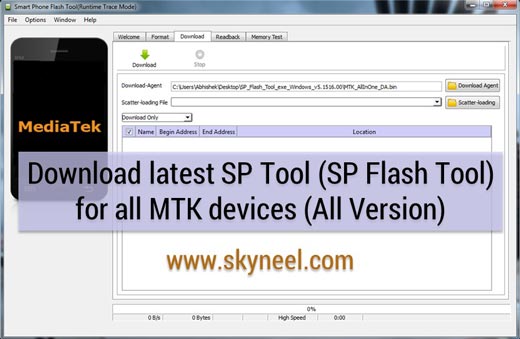Apr 21, 2020 OnePlus 8 unbrick tool is now available OnePlus phones are often considered as the spiritual successors to the Google Nexus lineup, mainly because of their developer-friendly design. Previous Qualcomm Flasher Xiaomi Mi Flash Tool Version 6.8.30 Latest Next Unbrick ZTE Axon 7 A2017U A2017 QD-Loader 9008 EDL AndroidBrick. Editor-in-chief Osman.
- All you need to do is connect your phone to PC via USB cable, load scatter file in the tool, and finally click on the memory test button. This feature allows the user to perform a factory reset and hard reset operations on their device. For that, a simple one-click format button is present on the tool. Unbrick Android.
- Conversely, the tool can also be used to unbrick a device. RSD Lite 6.2.4 on 32-bit and 64-bit PCs This download is licensed as freeware for the Windows (32-bit and 64-bit) operating system on a laptop or desktop PC from mobile phone tools without restrictions.
Download Xiaomi Mi Flash Tool – All Versions (Latest & Oldest)
Xiaomi Mi Flash Tool is developed by Xiaomi to flash Stock Firmware (Fastboot ROM) on the Mi and Redmi Phones. It comes in handy during the situation when you want to revert back to MIUI from Custom ROM. The MIUI Flash Tool can also be used to unbrick the Xiaomi Smartphone. It is also helpful when the device is stuck at Mi Logo (Boot Loop).
If you have accidentally soft bricked or hard bricked Xiaomi Phone, then you can take help of this Mi Flashing App to bring the device back to life. It also allows you flash the new updates both beta and stable MIUI ROM’s on the Xiaomi phone.
What is Mi Flash Tool?
Xiaomi MiFlash Tool is a flashing tool developed by Xiaomi Inc. This Xiaomi tool allows the users to flash the Stock MIUI 8, MIUI 9, MIUI 10 etc. all the older and latest versions of MIUI ROM on any Mi or Redmi Phone.
The Xiaomi Flash Tool can only flash the Fastboot ROM files, so Recovery ROM or OTA ROM Package cannot be flashed by the Xiaomi Flash Tool. The fastboot files can be flashed through this tool in Fastboot Mode or EDL Mode.
Important Notes:- The Xiaomi Tool is compatible with only Xiaomi devices.
- The MiFlash Pro tool only supports devices powered Qualcomm Chipset.
- Before installing latest version make sure to uninstall the previous version of MiFlash Tool from your PC.
- Mi Flash Tool 2017 and up supports both 32-bit and 64-bit versions of Windows 7, Windows 8 and Windows 10.
- You may have to unlock bootloader in order to flash fastboot ROM files. (Depends on the situation)
- The Mi Flash Pro misses the ability to flash OTA files and MIUI Recovery ROM.
- The Xiaomi Mi Flash Tool supports devices launched after Xiaomi Mi 3 only.
Features of Xiaomi Flash Tool 2021
Installer
Xiaomi Mi Flash Tool comes as Installer. While installing the Mi Flashing app, it also installs Xiaomi Drivers and ADB & Fastboot Tool.
Inbuilt Drivers
Xiaomi MiFlash Tool comes with In-Built Drivers which includes Google ADB Drivers, Microsoft MTP and RNDIS Driver, and Qualcomm USB Serial Driver etc. This means we don’t have to install any drivers separately.
Multiple Flashing Options
There are three flashing options available in Xiaomi Flash Tool – Flash all, Flash all except storage, and Flash all except data and storage. These options were replaced by other labels in latest versions and they are named as – clean all, save user data and clean all and lock.
Download Xiaomi Mi Flash Tool for Windows PC Free
Below you can see all the versions of Mi Flash Tool which were released till date. Download the suitable version based on the requirements and flash the Xiaomi Stock ROM Firmware or MIUI 9/MIUI 10/MIUI 11/MIUI 12 ROM on your Xiaomi Phone.
Follow this tutorial on how to flash Xiaomi MIUI Stock ROM using Mi Flash Tool.
This page describes how to install an image to the nand flash of Marsboard RK3066, ie, how to flash the board. You can choose to either flash the whole image (ie, update.img) to the board or just flash the selected partitions. You can download the prebuilt images or from our server the images.
|
Before you start
Keep in mind that:

What you will need to flash the board is:
- a MarsBoard RK3066 board
- a PC running Windows (XP 32/64bit, Windows 7 32/64 bit) or Linux (32/64bit)
- a micro USB cable with one side plugged in to the OTG port of MarsBoard and the other side plugged into the USB port on PC.
Windows
The Windows tool for flashing the image is provided by Rockchip. To flash the update.img, you need to use the RKBatchTool and to flash the partitions, you will need to use RKDevelopTool. Both RKBatchTool and RKDevelopTool rely on the RK USB driver so you will need to install it first as below:
Install driver
There two ways to install the driver under Windows:
- install using RKDriverAssistant tools - the easy way
- install manually
If you have already installed the USB driver please skip this step.
Install using RK Driver Assistant tools
There’s no need to connect your Rockchip device during this procedure just download and extract RKDriverAssistant.zipThen double click on DriverInstall.exe in the RKDriverAssistant directory to start the utility.If you've previously tried to install the Rockchip USB drivers for any Rockchip devices make sure you click “Uninstall Driver” first.

Then click “Install Driver”, and depending on your version of Windows the Security below may show up twice during installation. Just click “Install”
when the driver has finish installing then shut down MarsBoard and connect the MarsBoard to your computer and let the board go to recovery mode, then your computer will detect the board and you will see it within device manager.
Now the driver should have been installed successfully!
Install Manually
Download the file (Rockusb_Driver_v3.7.rar) from here and shut down the MarsBoard then connect the MarsBoard to the computer and let the board go to recovery mode. After your computer should detect the board and you will see an unknown device within device manager.
Select the Unknown device then right click and select 'Update Driver Software'.
Select 'Browse the computer for driver software'.
Find the file unzipped file you downloaded earlier (Rockusb_Driver_v3.7.rar) and select either the 32/64bit folder then click 'OK' to install.
When the driver is installed successful you will then see a Rockusb Device in the device manager window.
Now the driver is installed successfully.
Flash Image
There are two methods to flash an image use android tools.
- use Download Image (can flash by partitions)
- use upgrading firmware (flash update.img only, it will erase everything.)
Using AndroidTool to flash update.img (Firmware)
Download AndroidTool from here. Then unzip it and double click AndroidTool.exe
Select an image (RK3066 update.img), click Firmware. For information on how to make an update.img see update.img
Power down the MarsBoard and connect the MarsBoard to the computer then let the board go to recovery mode after the program should detect the device.
Click the 'Upgrade' button to begin flashing and when the flashing process finishes successfully you will see the following interface.
If the flashing has aborted ,it could possibly be an error with the update.img, you can either try to redo the operations above or make the update.img again!
Using AndroidTool to falsh image by partition
Download AndroidTool from here. Unzip it the file and double click AndroidTool.exe.
Power down the MarsBoard and connect the MarsBoard to the computer and let the board go to recovery mode then the program will detect it.
There are eight selections to choose from so select the correct row and then select the checkbox to the left of the row to select it. After you must click the column on the right side for the path of the file you want to flash. You can then select one or more files and flash them at once. Finally Click 'Run' to flash images to the device (the right most selection shows the log of the progress).
If successful the board will disconnect from the tool and boot into the system.

Please Note:
- The kernel is contained within the boot.img when you package the image by './mkimage.sh ota' please see Android Build for more information.
- you can flash one of more image at one time as needed
Preparing IDB failed
This happens at upgrading bootloader, if you need to upgrade the bootloader or the update.img contains a new bootloader, you probably will meet this. The marsboard is 'bricked'. Follow this unbrick instructions to unbrick it.

Linux
Rockchip has provided tools for upgrading within Linux (closed source) since Android 4.4. The initial RE work of the Rockchip bootloader updating protocol is by naobsd and has been improved by some in rkflashtool. linuxerwang has made a GUI version of the rkflashtool called rkflashkit.
Unbrick Tool Red Magic 5g
Warning: both rkflashtool and rkflashkit can not flash the update.img.
Using Linux Upgrade Tool to flash update.img
Download the Rockchip linux upgrade tool here. Unzip it and you will get a file called upgrade_tool which is a binary executable file under Linux.
Flash update.img
Let the board go to recovery mode and run the following command to flash the update.img:
Lowlevel Format nand
Samsung Unbrick Tool

If you have an error with upgrading you can low level format the nand flash first with the following command:
Flash parameter
Flash bootloader
Flash the boot.img
Flash the kernel.img
Unbrick Tool Red Magic 5g
Others
There are other commands in the upgrade_tool, such as:
Installing RkFlashKit
In order to install RkFlashKit in Debian or Ubuntu, you need to get the source code, build it,You can download the pre-built rkflashkit here or build it yourself with the following command:
And install it with the following command
Flashing firmware with RkFlashKit
Run it with the following command
The tool is similar to RkAndroidTool as it can burn partition images to specific partitions. You’ll need to enter recovery mode just like you would do in Windows, by pressing the recovery button, before powering the device via the USB port, and connect the USB cable to your PC. RkFlashKit should automatically find your device, so you just have to select the correct NAND partition, select the image file to flash, and click on Flash image.
- Click the Nand partition and you will see the partitions of the board listed then choose the one you want to flash.
- Choose the location of the image you want to flash to that partition.
- Click the 'Flash image' button and it will start flashing
- After it's finished click 'Reboot Device' button to reboot the board.
Flash RKBatchTool Firmware File with RkFlashKit
the firmware updates are often distributed using RKBatchTool file format, which can not be directly handled by RkFlashKit. Luckily, there are some other tools available to extract the partitions file from such firmware.
You’ll first need to build rk-tools:
Then use img_unpack tools to unpack the firmware to another format:
Finally, run afptool to extract the files from the resulting file into “firmware” directory:
./afptool -unpack update_mk908_106j2107_04_unpack.img firmwareCheck file...OK
UNPACK -------Now that we’ve got our partition files, simply use RkFlashKit as mentioned above.
Please enable JavaScript to view the comments powered by Disqus.blog comments powered by Disqus